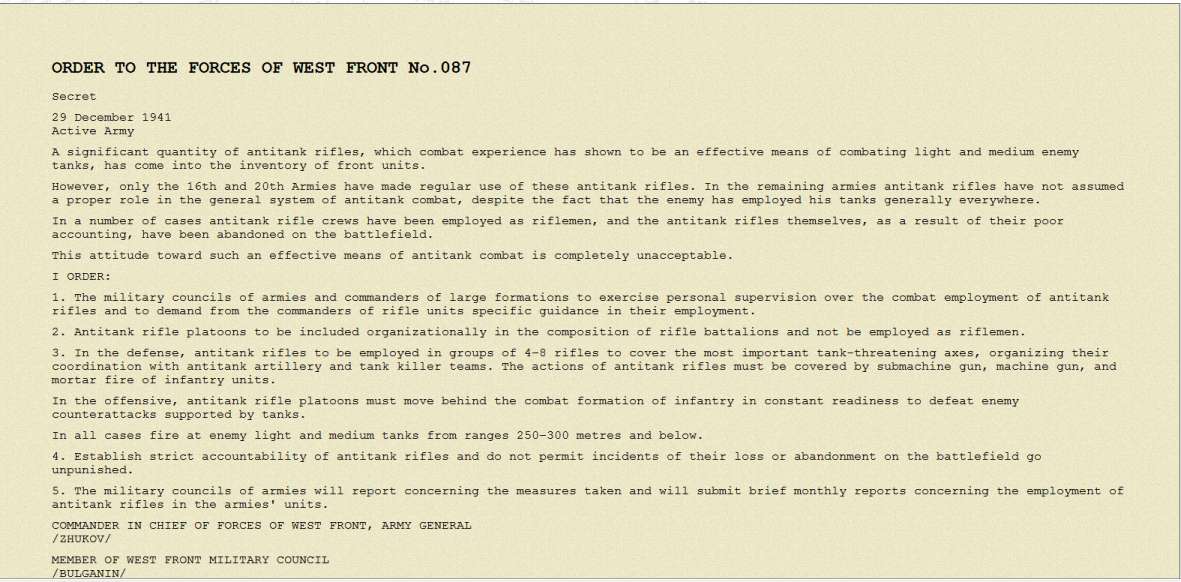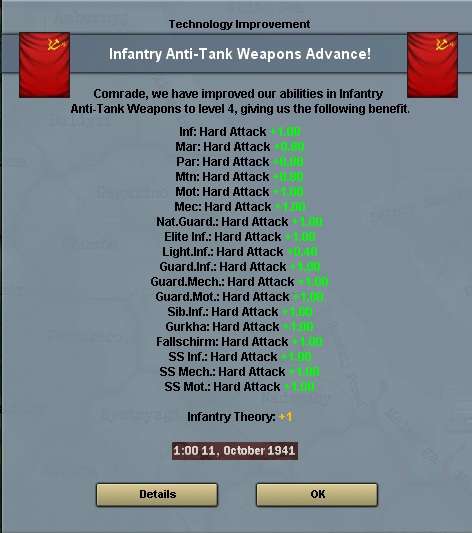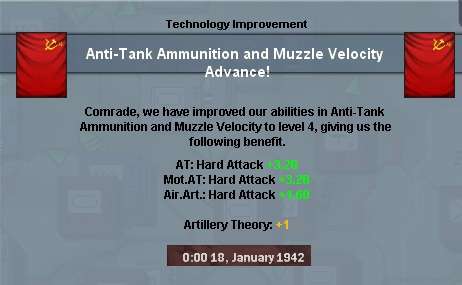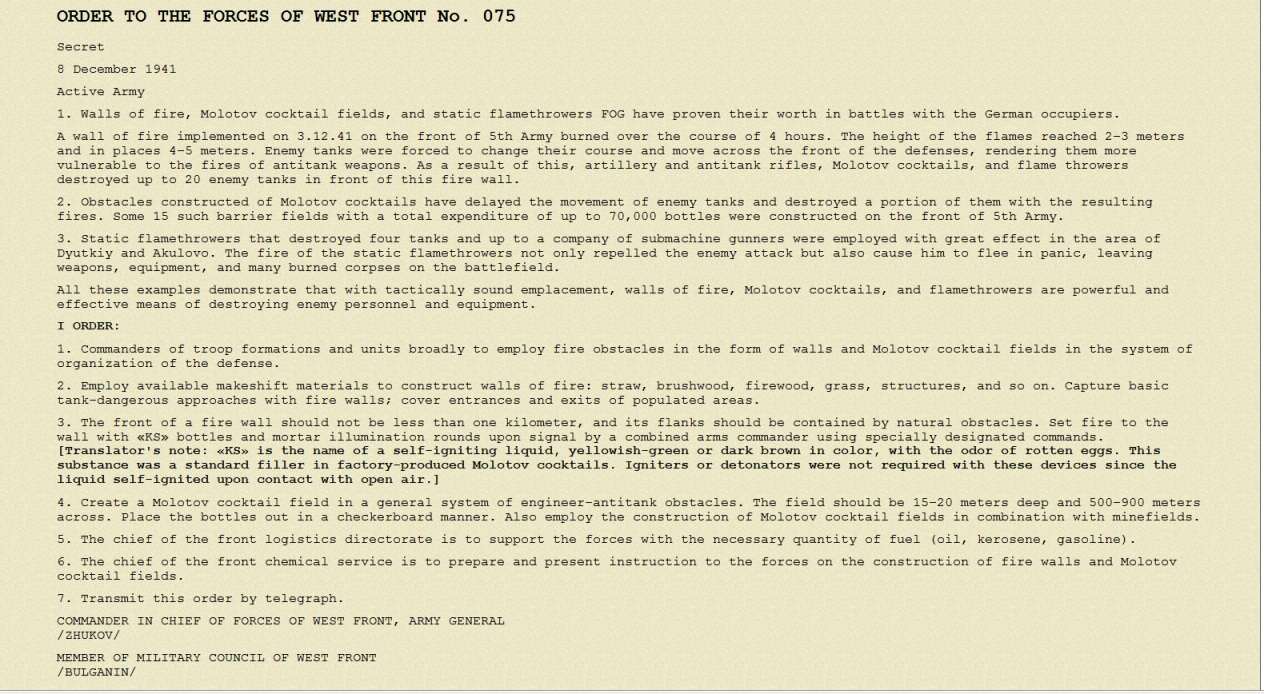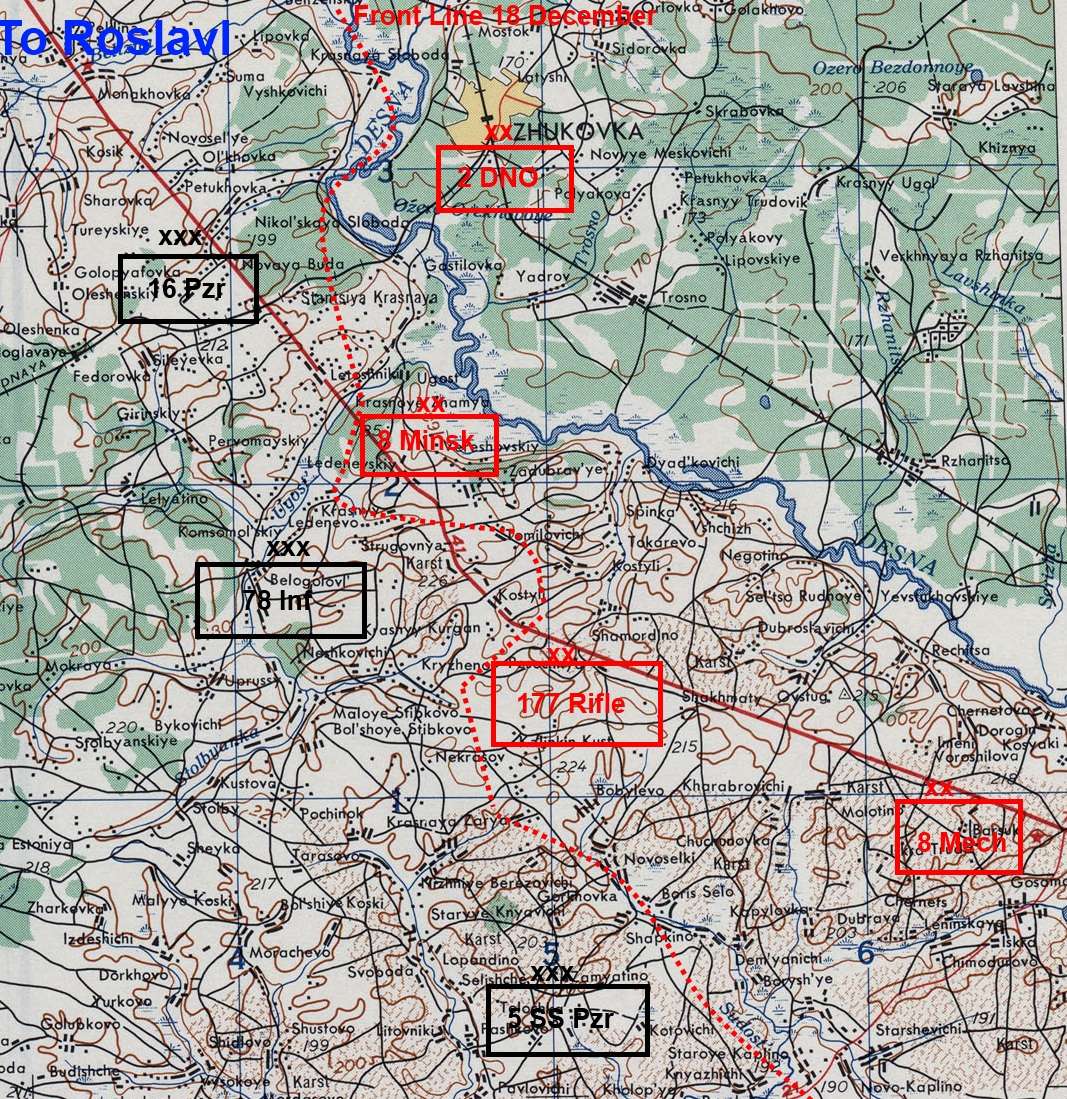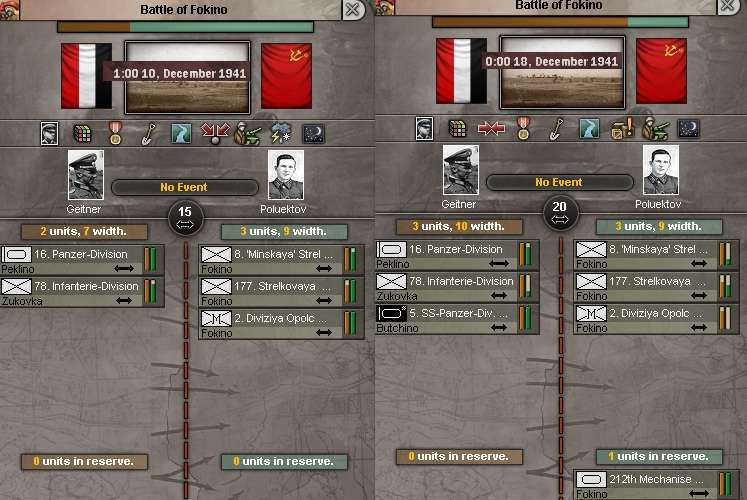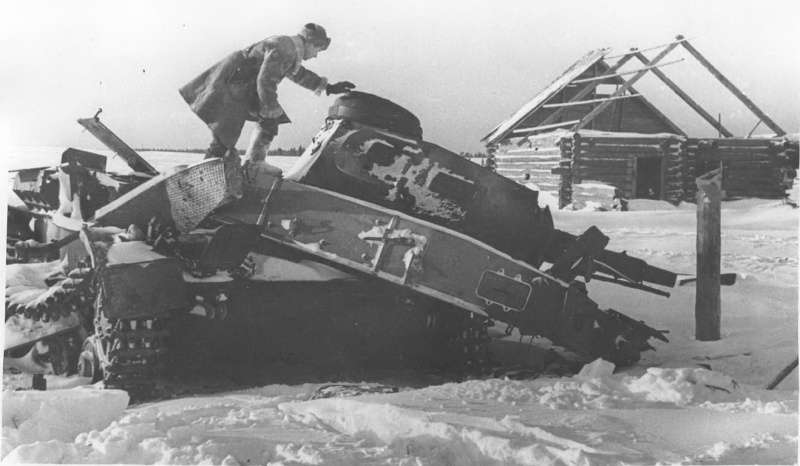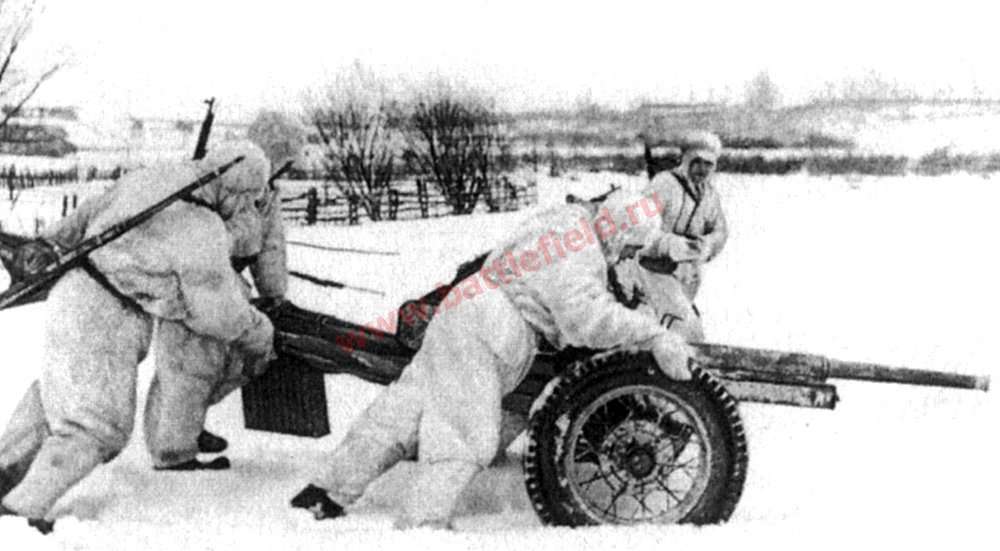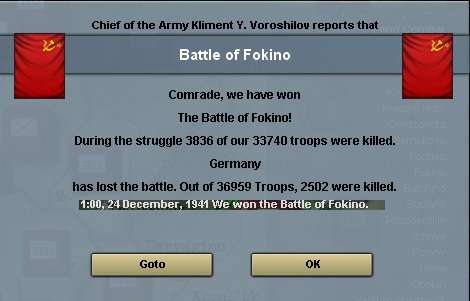"This is the Hour of Lead" – The Upper Volga, October-November 1941
Even as the Germans occupied Vologda and pushed onto Archangelsk their main effort was a renewed thrust at Moscow. By late September, they had taken Rybinsk and even had forces to the east of the Volga. However, they needed to take the twin cities of Jaroslavl and Kalinin to secure control of the Upper Volga. Jaroslavl would allow them to interdict the Trans-Siberian railway and Kalinin was the last obstacle to a direct assault on Moscow.
 Yaroslavl
Yaroslavl
At Jaroslavl, the initial German drive at the end of September had been stalled by airdropping the 2 Paratroop divisions from the STAVKA reserve. These held the approaches to Yaroslavl for long enough for elements of 1 Army to move from reserve. As in the Arctic, Soviet resistance stiffened just as the German assault weakened due to poor weather

and constant attacks on their supply lines. This intervention was sufficient to hold up the Germans at Uglic with this small town only falling on 7 October.
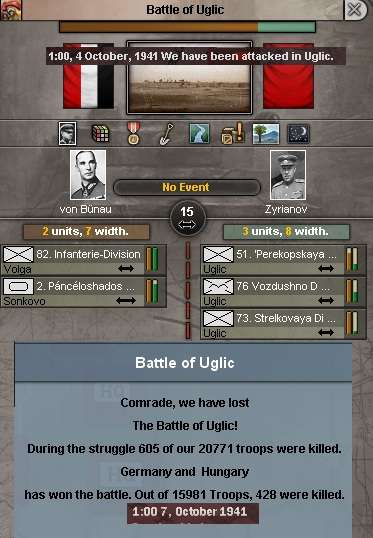
By the time the town fell, Soviet ground troops had already commenced a counterattack. The town was retaken after a brutal 12 day battle on 18 October
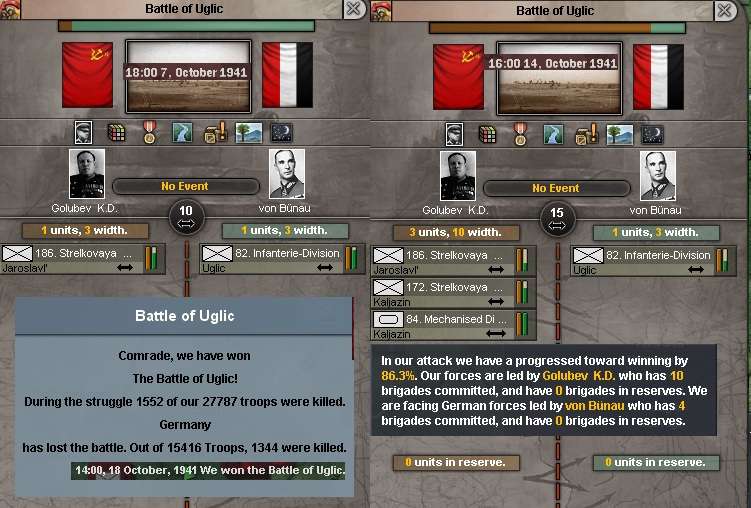
and then the Germans were pushed back into Rybinsk in further heavy fighting on the west side of the Volga from 19 October to 5 November.
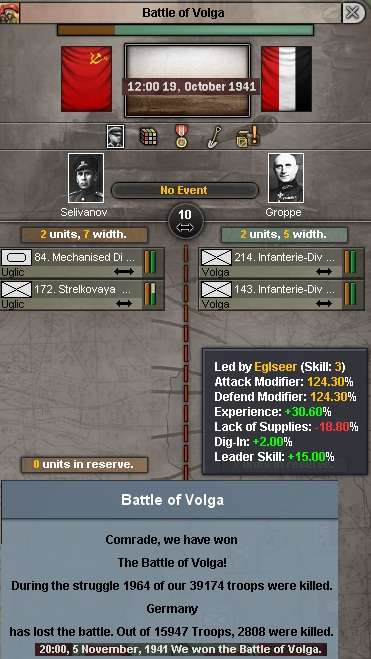
Even before the German offensive on the west bank of the Volga was halted, 1 Army set about eliminating their bridgehead across the Volga at Posehone, with 10 Panzer finally being driven back on 5 October.
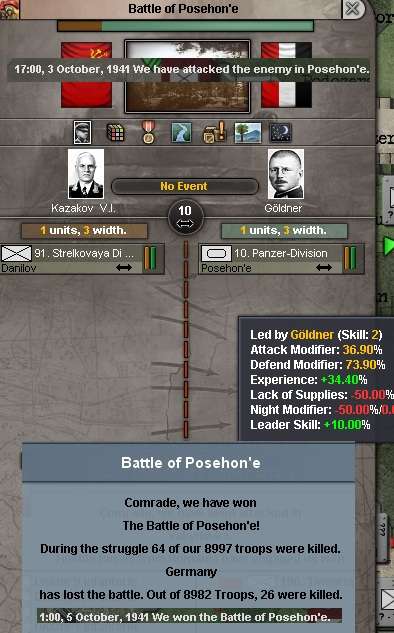
With the east bank back firmly in Soviet hands, the risk that the Germans could link up with their colleagues pushing south of Vologda was lessened. However, the situation remained critical and the next stage, if at all possible was to regain Rybinsk. The threat was clear when the Germans made a determined attempt to retake Posehone from 17 to 21 October, spearheaded by 10 and 17 Panzer divisions.
By the end of October, the German offensives in this sector were over, but as long as Rybinsk was held, there was a danger they could again push either south or east. 1 Army made two, near continous, attempts to take the town from from 28 October to 15 November, with the Soviets being beaten off losing almost 3,700 for just 1,100 dead.
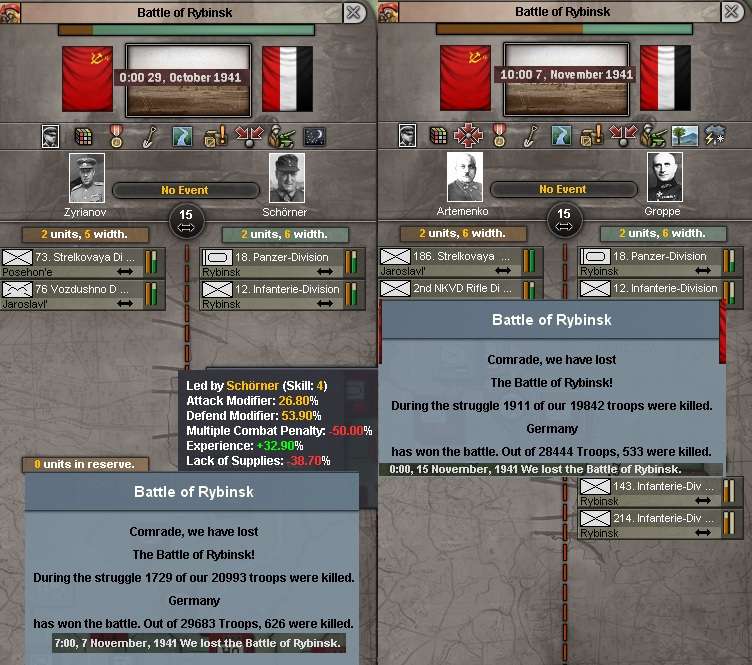
1 Army had had to divert some of its forces to seal off the German breakthrough at Vologda and what was left was insufficient to dislodge the well organised German defenses.
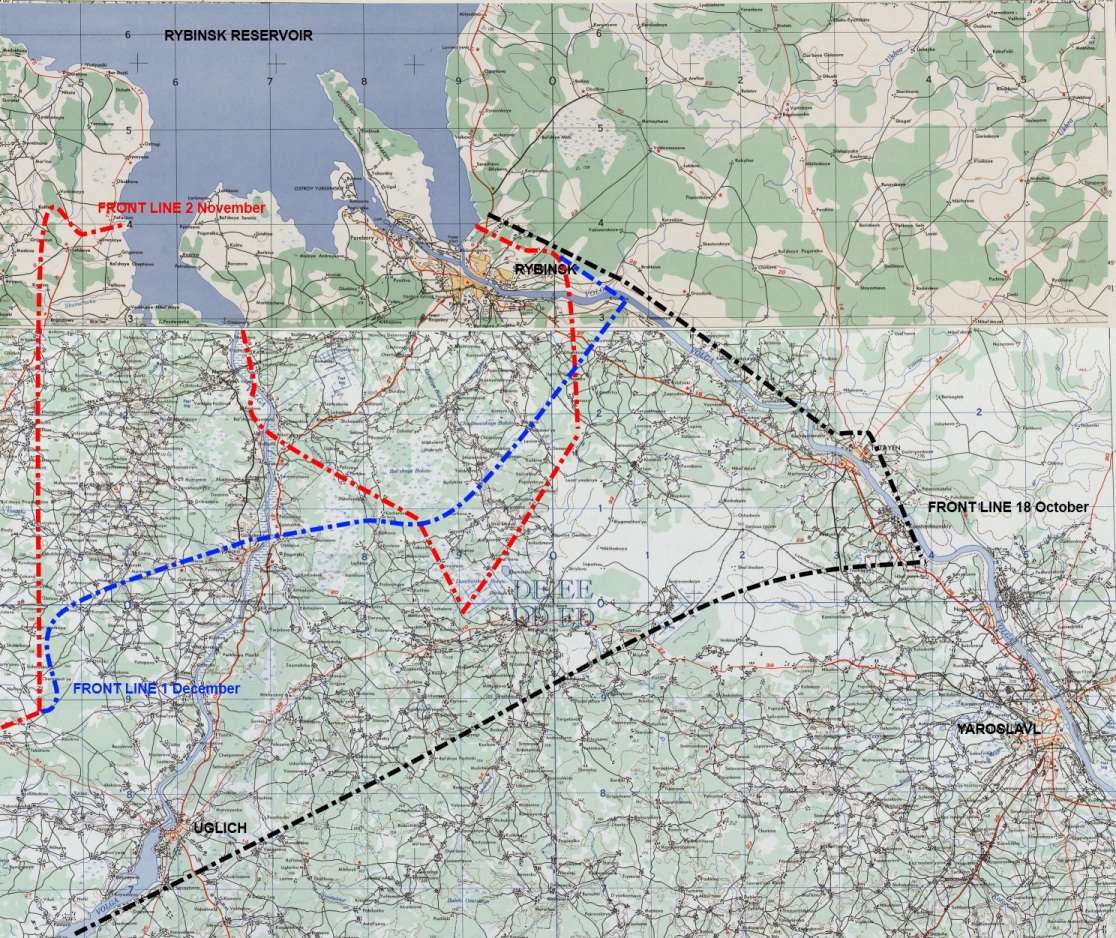 Kalinin
Kalinin
Following the September battles, Kalinin stood out in a salient into the German lines. Thus as with 1 Army, 8 Army initially sought to halt any further breakthroughs and then to eliminate the most dangerous of these salients. First Kazin, to the east of the city was regained on 7 October and then this was used as a springboard to regain Sonkovo on 21 October, an offensive conducted by 14 Mechanised Corps.
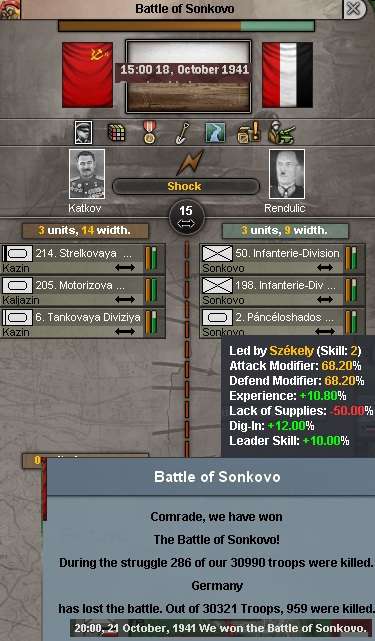
Briefly Soviet tanks reached the Rybinsk reservoir on 2 November, pocketing the German units at Rybinsk. However, a the T-60s of 14 Mechanised Corps were no match for an assault by 10 Panzer moving down from Cherepovets and German communications were quickly restored.

T-60s of 18 Mech pushing towards Rybinsk
However, combined with the victories around Jaroslavl the gains had the effect of placing the German forces at Rybinsk potentially either in a pocket or as a spearhead, depending on which army had strategic mastery. It also hinted at the possibilities that might be opened up if a more sustained attack was made in this direction.
Although the Luftwaffe was still contesting the skies, the VVS had sufficient fighters to repel most of their attempts to bomb or intercept and Sturmoviks flying from the airfields at Moscow added to the pressure on the Germans.

Mednoye, to the west of Kalinin was retaken on 27 October,
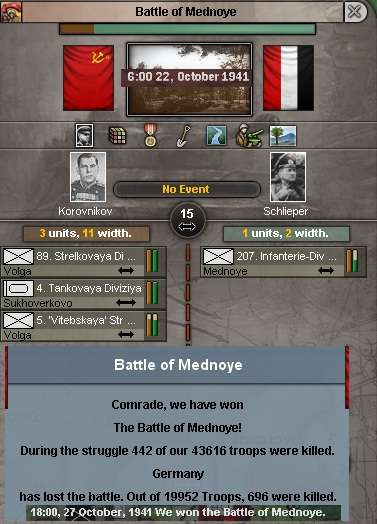
and combined with the fall of Rameski on the same day this seemed to secure the Kalinin sector.

(SU-76s moving forward at Kalinin)
However, the Germans had much more operational flexibility here (and also greater freedom in the choice of supply route) than they had at Rybinsk. The allocation of fresh troops meant they retook Mednoye in more brutal fighting from 3 to 19 November.
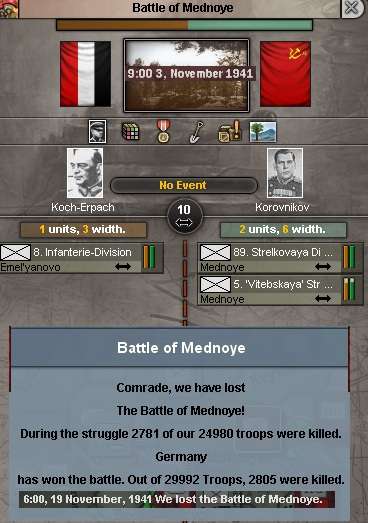
The Germans followed up this victory by recapturing Rameski on the 22nd.
Thus for a cost of 20,766 Soviet and 18,416 Axis dead, the front lines were mostly unmoved from the end of September to the start of December. The only signficant gain was 8 Army held on to its gains to the east of Kalinin. Critically this put their front line less than 25km from the Rybinsk reservoir, was a sector of the front that was lightly held and there were no major river obstacles to a drive to the north.
Implications
If this potential was to be exploited though, both 8 and 1 Army needed significant reinforcements. The current forces were inadequate to both take and hold any significant gains. However, STAVKA could take one important lesson especially from the Kalinin operations. For the first time since early July, Soviet armour (in this case the 2nd Tank Corps) had been used on the offensive and grouped together.

(Zis-30s from 2nd Tank Corps, gave the Soviet armour greater offensive punch)
If 8 Army had lacked the force to hold the ground it briefly took, it certainly had a tool capable of driving the Axis forces back.
.

















